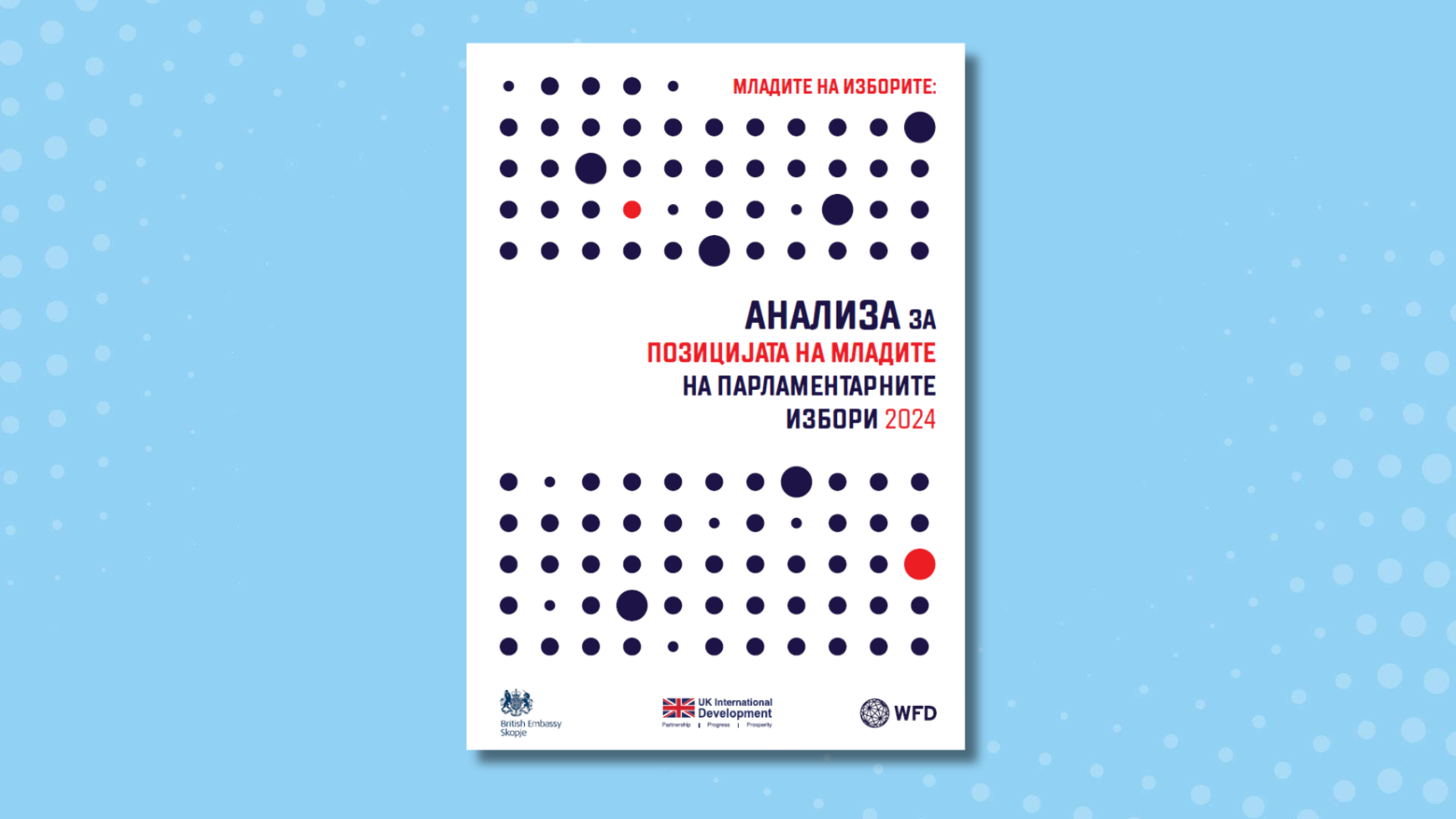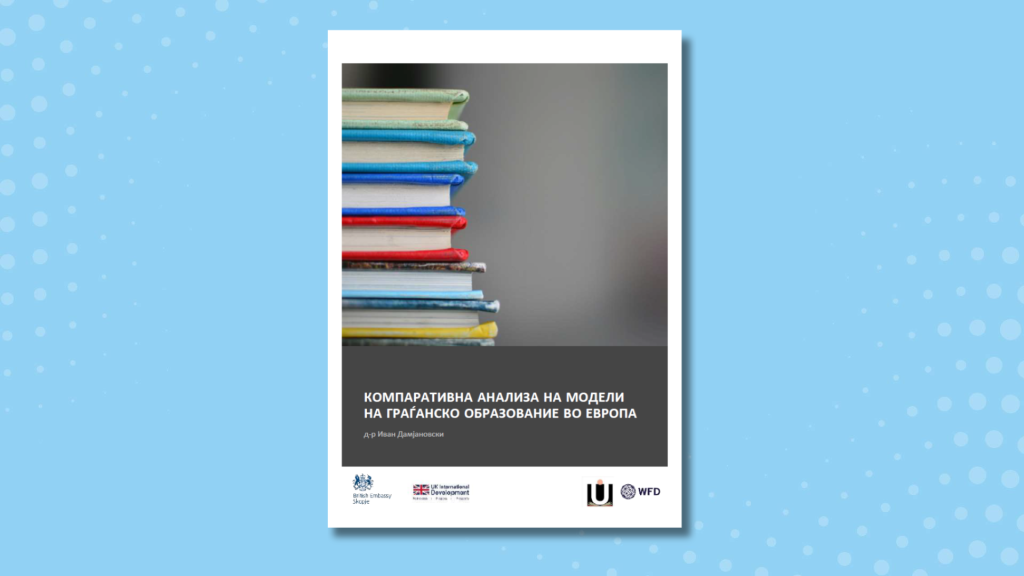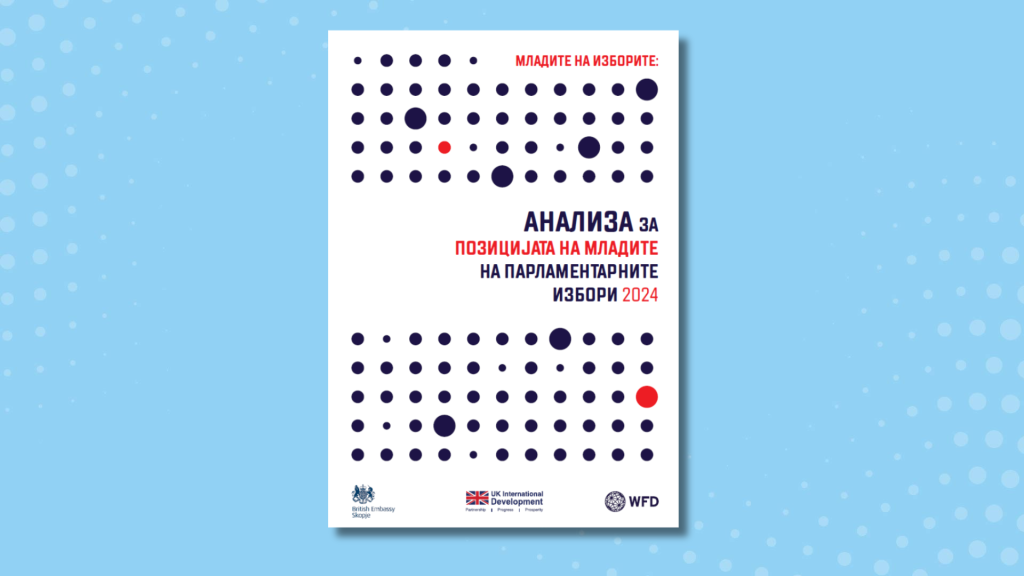A recent study in North Macedonia analyses the candidate lists and electoral programs presented at the 2024 parliamentary elections, as well as the new government program to assess the representation and positioning of young people.
Key Findings
The study shows that despite being a significant portion of the population, young people remain the least represented demographic group in the Macedonian parliament. Candidates aged 18-29 account for 14.6% of the total candidates, while the broader age group of 18-39 makes up 35.5%. This is a decrease from the 2020 parliamentary elections, where candidates aged 18-29 were 19.17% and those aged 18-39 were 44.94%.
Gender representation shows that male candidates exceed female candidates in all political entities, except among the youngest age group (18-29), where there are 125 female candidates compared to 120 male candidates. This trend was also spotted in the 2020 elections.
Following the formation of the new government, the Assembly now includes five more female MPs, making the gender distribution 62.5% male and 37.5% female.
Young MPs aged 18-29 make up 2.5% of the elected members, while those up to 39 years old total 25.8% of the MPs. The average age of assembly members for the 2024-2028 term is 45.4 years.
Young people are often seen as recipients rather than active participants in policy creation and implementation. Generally, they are assigned a passive role with limited opportunities to influence the policies affecting them directly.
The electoral programs analysed focus on specific solutions to existing problems for young people, with some also addressing potential risks and challenges. However, a detailed action plan, including success indicators, deadlines, budgets, and responsible institutions, was lacking in all electoral programs.
Most political entities provide specific measures related to education and student standards. Although most programs address topics related to the economy and youth, there appears to be a lack of well-defined solutions for translating these policies and commitments into actionable measures.




